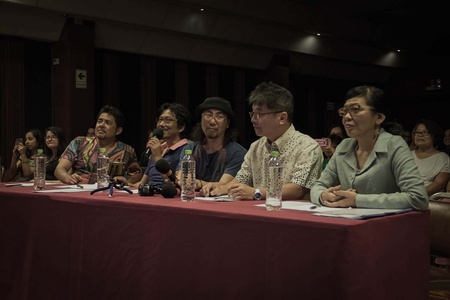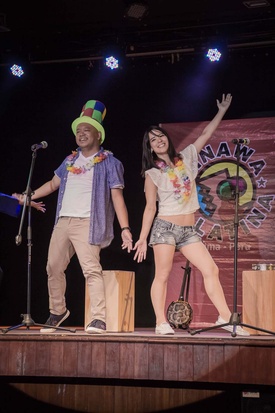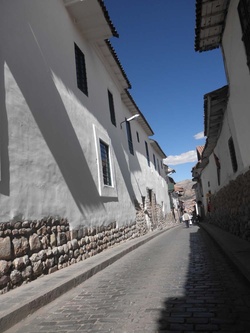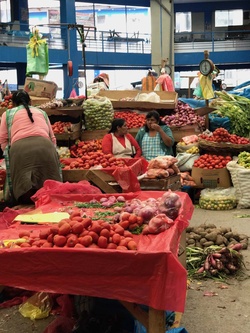Late at night on January 30, 2017. After 23 hours of air travel, I arrived at Jorge Chavez International Airport in Lima, Peru. In the crowded arrival lobby, I quickly searched for familiar eyes. There they were! My eyes met those of my Japanese-Peruvian relatives, who were tired of waiting. As they said "Welcome back," memories of the four years I'd spent in this country and hopes for new encounters came together, and the hot summer winds of the Southern Hemisphere instantly heated my body and mind.
The purpose of this stay is the first overseas performance of "OKINAWA LATINA," a project launched in 2015 to connect Okinawa and Latin music.
The initiator of this event is Peruvian singer Alberto Shiroma of Diamantes. I am involved as a sponsor due to my connection with South America. In fact, we were planning another big event called "Japanese Artist Discovery Audition" during this visit to Peru. The origin of this event was "OKINAWA LATINA" held in Okinawa last October as a collaborative project with the "6th Worldwide Uchinanchu Festival".

For last year's performance, we invited the Kinjo Brothers, a band of Japanese brothers living in Canada who occasionally perform live in Okinawa, and Goose Tono, a fourth-generation Japanese living in Argentina whose band I am involved in producing. They are modern young people who grew up absorbing the culture of the countries in which they were born.
The Kinjo Brothers' "ME MINUS YOU" is an original song featuring the melody of the Okinawan folk song "Tancha-mae," but it sings of "lost love" in a light, reggae style, with a city atmosphere. Goose Tonoshima's "Jikuu no Hana" is a ballad about the life of their grandparents who immigrated to South America, but it exudes elegance even in its sadness. Their songs seem to weave together the passions of their country and their roots that swell in their hearts, "Okinawa" and "Nippon." For me, who lives in Japan, the sound is fresh and shocking, and I can't help but say, "Cool!"
Why is their music so captivating? Wanting to find out the answer, I once asked, "What do you think you are as a person?" Goose Tono answered, "I don't think I'm Argentinian or Japanese. I'm probably a Japanese person." From that time on, the word "NIKKEI" started to take root in my mind. I wondered if that heart-tugging sound was a new realm that only Japanese people could create.

As a professional planner, the "connection bug" inside me started to stir, and the dots on the imaginary map of the distribution of Japanese people around the world started to blink. It may be presumptuous, but I couldn't help but feel that our mission as "OKINAWA LATINA" was to convey the singing voices of Japanese people. With this in mind, the idea of "audition winners will receive a ticket to a performance in Okinawa" emerged, and in December last year, we sent out an open call to Japanese people living in Peru. The selection criteria were two points: Japaneseness and original songs. On the day of the audition, which was looking for a sound that could not be found in Okinawa or Tokyo, after a long judging meeting, the unit "Marco & Melissa" won the ticket to Okinawa. Marco, who is in charge of music production and has virtuoso skills on the sanshin, plays with main vocalist Melissa a lively fusion based on Latin rock, sprinkled with elements of cheerful Okinawan folk music. When asked if their musical outlook, which is filled with youthful energy and seems to run defenselessly through the hustle and bustle of Lima, could be called "NIKKEI," to be honest, I haven't found the answer yet.
Until the group's first unveiling at "OKINAWA LATINA" in October of this year, Akira Ikuma will join them and they will continue to create music remotely, exchanging ideas between Okinawa and Peru.

It was 111 years ago that the first Okinawan set foot on Peruvian soil after a three-month long journey on an immigrant ship. Later, in 1985, Alberto Shiroma won the Japanese Music Competition and came to Japan with the dream of becoming an enka singer. Shortly after, Peru's political and economic turmoil occurred due to high inflation and intensifying terrorism, and many Japanese Peruvians sought work in Japan, beginning the reverse migration. Then, 85 years ago, I took the shadow of my grandparents who emigrated to Peru as my guide, and made a living as a planner in Okinawa, chasing the dazzling light of Japanese musicians hiding somewhere in the world, crossing the sea. The trajectory of the Okinawan people who have been traveling back and forth on the sea for a long time. It is as if they are drawn to a point of intersection dyed in jet black.
Peru is currently experiencing an unprecedented gastronomy boom, and famous chefs from Europe are frequently visiting Lima to discover the essence of Peruvian cuisine. They are captivated by a genre of cuisine called "NIKKEI". It began when Japanese immigrants passed on the taste of their homeland to their descendants through trial and error using limited local ingredients. It is an exquisite fusion of Okinawan, Japanese and Peruvian cuisine. Last year, a Japanese restaurant in Peru ranked 13th in the UK's "World's 50 Best Restaurants," an indicator of the culinary world, while European restaurants were ranked in the top places. "NIKKEI cuisine," which rose to the world level like a comet, has become the pride of Japanese people.
The creative world is an accumulation of work that confronts the delicate parts of the mind. Like the crane returning a favor, one by one, the feathers are plucked from the body, the body is scraped, and the essence that is the root of oneself is toyed with and spun.
At the root of Japanese musicians seems to be a confrontation with the identity of "NIKKEI" that thinks of two countries. I would like to explore a way to connect the "NIKKEI" of Okinawa, Japan, and the world, so as not to overlook even a fragment of their sensibility.
*This article is reprinted from Momoto issue 30 (published by Toyo Kikaku, an editorial studio).
© 2017 Yuko Nakasone




